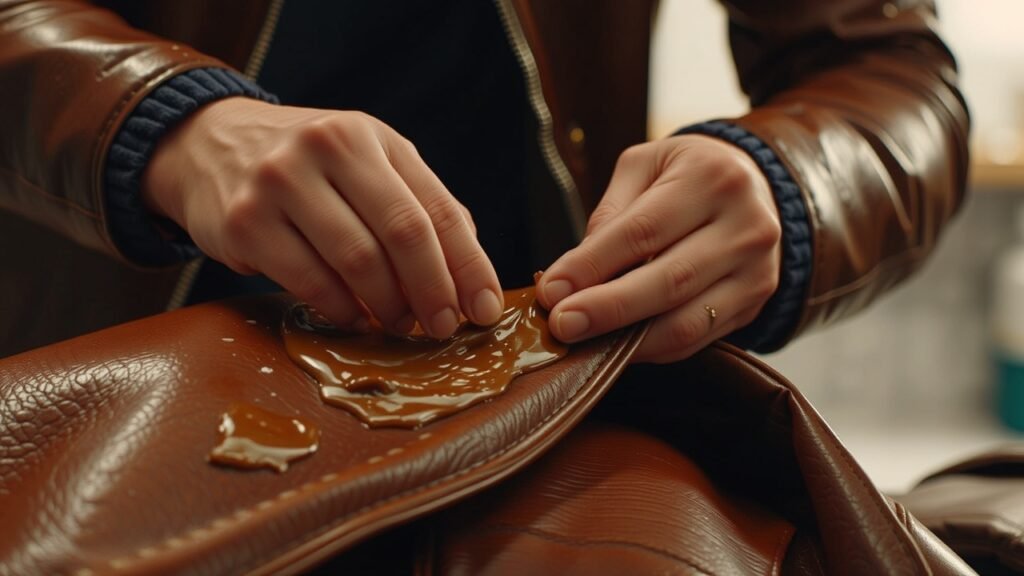Have you ever wondered how to make your leather jacket(s), or your leather boots, always look their best without jumping in a cab daily to the store for expensive conditioners? There’s nothing I can think of that doesn’t look and feel better with a little leather on it, but like most quality stuff, it needs a little TLC. What is the secret to keeping leather products looking right and lasting longer? Use a suitable leather conditioner. The good news is that you don’t need to buy expensive products. Some of the very best conditioners can be made right at home with the things you already have in your pantry!
In this guide, you will find some great DIY leather conditioner options along with all the benefits and risks involved so that you’ll know which one is perfect for you. So, let’s start and investigate through which conditioners your leather will remain soft, fresh, and crack-free.
Why do we Condition Leather?
Before we dive into our DIY solutions, let’s discuss why leather conditioner is a must. The word leather refers to animal hide and as such over time it can lose its natural oils. Without these oils leather will dry, and become brittle with cracks. By leather conditioning, and restoring these oils helps leather stay soft, resilient and attractive — conditioning.
DIY Leather Conditioner You Can Make at Home
1. Olive Oil: Myth vs. Reality
You’ve probably seen olive oil recommend online, as a leather conditioner. However, there’s a bit of controversy here. It is what some swear by, for others, including professionals, it is what they warn against. In some cases, olive oil can soak too lightly, or too much, and that can cause discoloration or even damage. While olive oil can work in a pinch, it isn’t a reliable and long-term solution.
When using olive oil, go small and test it on a hidden area of the leather item so it doesn’t ruin the whole leather product.
2. Lemon Oil and Coconut Oil: Gentle Yet Effective
Looking for a natural leather conditioner with a refreshing twist? Good substitutes are lemon oil and coconut oil. A safe and pleasant-smelling version of the oil you might use for leather is lemon oil, and coconut oil is hypoallergenic. To apply, first clean the leather surface, then rub a soft cloth that’s been soaked in either coconut or lemon oil. The result? Moisturized leather that’s also protected against cracking.
This method also keeps your leather smelling fresh as well, which is something I always appreciate.
3. Beeswax-Based Conditioner: DIY with Staying Power
If you want to proceed with long-lasting effects, beeswax-based conditioners are a tried and true choice. Leather beeswax conditioner besides softening the leather, forms a protective barrier that prevents leather from dust and moisture. Here’s how to make it:
Step 1: Mix beeswax cocoa butter and almond oil in a ratio of 1 to 1.5.
Step 2: Mix this well and melt over medium heat, stirring gently.
Step 3: When it’s cool about 30-40 minutes, it should form a balm-like texture.
Step 4: Rub it on the leather with your fingers, wiping any excess off with a soft cloth.
4. Flaxseed Oil: A Hypoallergenic Alternative
If you’re looking for a hypoallergenic leather conditioner flaxseed oil is a great option. It is non-reactive, nourishes leather without reaction like coconut oil, and is suitable for use on both furniture and smaller leather items. Work it in with a small amount applied to a soft cloth.
5. Petroleum Jelly (Vaseline)
You don’t believe me, but that trusty old jar of Vaseline makes for a decent leather cleaner. Petroleum jelly softens leather and therefore makes it less likely to crack. But, as with all DIY conditioners, it’s always wise to do a patch test first. Try out some on a small, unseen portion of your leather, then see how the leather reacts.
6. Baby Soap-Based Leather Conditioner
If you’re looking for a super gentle leather conditioner, you could mix baby soap, water and a drop of vinegar and it really couldn’t get any more gentle than that. Here’s how to make it:
Step 1: Put a tablespoon of baby soap and a small amount of vinegar into a quart of warm water.
Step 2: Let a soft cloth dip into the solution and lightly dampen the leather.
Step 3: Let it air dry naturally.
If you’re dealing with delicate leather products, this is ideal because baby soap is made to be gentle and won’t stain or damage your leather.
Another Leather Conditioner Option
Lanolin-based cream: Excellent for delicate leather — known for its moisturizing properties.
How to Apply Your DIY Leather Conditioner Safely

Regardless of the DIY leather conditioner you use, how you apply it is more important than anything else. Here’s a step-by-step guide for safe conditioning:
Clean the leather: Always work on a clean surface. Wipe away any dust, dirt, or residue.
Test in a small area: First put a small amount of leather conditioner in an inconspicuous spot just to make sure it doesn’t alter the color or texture.
Apply conditioner in small amounts: If too much conditioner is used, leather will feel sticky or greasy. Rub in a thin layer with a soft cloth.
Allow to absorb: Once you’ve applied let the leather sit for a few minutes so the conditioner can soak in.
Buff with a clean cloth: Clean up any product that leaks out and then buff the leather until it has extra shine.
Frequently Asked Questions (FAQs)
Q: What can I use instead of leather conditioner? A: You can substitute store-bought leather conditioner with Vaseline or Coconut oil, Lemon or Flaxseed oil.
Q: Is coconut oil safe for leather? A: Yes, coconut oil is a great leather conditioner for furniture and larger items, but yes, it works on your shoes too, sort of.
Q: Can you use olive oil on leather? A: Olive oil is a bit of a controversy: it helps for a short period but it can cause trouble over time. COCONUT OR LEMON OIL ARE OUR RECOMMENDED OPTIONS.
Q: Does Vaseline work as a leather conditioner? A: Vaseline is certainly a good product to use for softening and keeping the leather soft and supple so that it doesn’t crack.
Q: What’s the best way to condition leather? A: For best results clean your leather, apply a small amount of your chosen conditioner, leave to absorb, then buff.
Conclusion: Try DIY Leather Conditioning for Long-Lasting Leather
DIY leather conditioning is easy, cheap and a great way to keep your all leather products looking sharp and supple. You can also make a leather conditioner with just a few simple ingredients to bring the best out of your leather jackets, bags, shoes and furniture. That’s also nice, there’s something rewarding about doing it yourself and knowing exactly what goes into your leather care routine.
Next time your leather starts to look a little dry, skip the store and head to your pantry. You’ll save a few bucks, and your leather will look as stylish as EVER.





Excellent post. I was checking constantly this blog and I am impressed! Very helpful information specially the final section 🙂 I maintain such information a lot. I used to be looking for this particular info for a long time. Thank you and best of luck.
Hello there, I found your web site by the use of Google whilst searching for a similar matter, your web site came up, it seems to be good. I’ve bookmarked it in my google bookmarks.